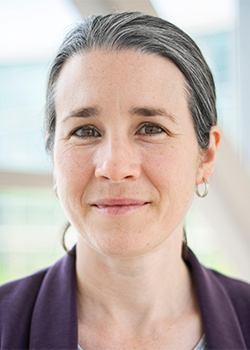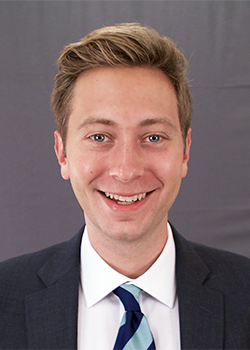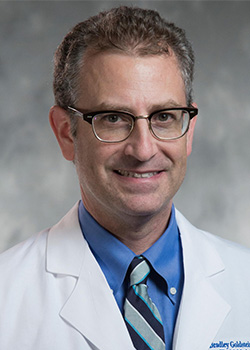
Trudy Oliver Tracks a Deadly, Shapeshifting Tumor
Trudy Oliver, PhD, studies a type of cancer that has a 5-year overall survival rate of just 7%. Its biological drivers are different from most other cancers, so it’s harder to develop targeted treatments. On top of that, research into this tumor is under-funded.
Oliver, professor of pharmacology and cancer biology at Duke University School of Medicine, investigates small cell lung cancer, which is almost always linked to cigarette smoking. "Some people think 'Oh, you smoked. You got what you deserved.’ Why do we need to put money into this?’” she said.
Whatever you think about that statement, Oliver’s work suggests that it doesn’t matter. Small cell lung cancer is a shapeshifter. Her recent research found that it evolves nimbly, changing identities in order to survive. Increasingly, scientists are finding that many cancers have this "plasticity" to some extent, especially when they are threatened by ever-more targeted treatments.
Because of that, small cell lung cancer has much more in common with other cancers than previously thought. "In order to understand how to treat any kind of cancer, we have to study them all," Oliver said.
Oliver joined the Duke faculty in July 2021 as a Duke Science and Technology Scholar. She earned a PhD at Duke in 2005, and after a faculty position at the Huntsman Cancer Institute at the University of Utah, she returned to Duke for the chance to forge new collaborations. "I really wanted to be exposed to new science and new ways of thinking," she said.
Systematic Profiling
Oliver has made progress with small cell lung cancer by systematically profiling it. For the past 30 years, all patients with the disease have been treated the same, with chemotherapy. In the last handful of years, Oliver and other researchers have shown that they can divide the disease into at least four different subtypes, each of which responds differently to treatment. Some of this work has been translated into human clinical trials. For instance, in 2017 her lab showed that one subtype responds best to a class of drugs known as aurora kinase inhibitors, and in a clinical trial published in 2020, other researchers showed that a specific aurora kinase inhibitor worked better in patients with this subtype.

But the difference was small. "The sad part is that even though the aurora kinase inhibitor works better at extending survival in this subset of patients, the amount of benefit they get is only about two or three months," Oliver said. "That's the scale of things people see in small cell, because it's so deadly and aggressive. I believe we can do better than that."
The key to doing better, Oliver believes, is harnessing this cancer's ability to shapeshift. In a 2020 study published in Cancer Cell, Oliver and PhD student Abbie Ireland and colleagues reported that small cell lung cancer can cycle through different identities with ease, and that multiple subtypes are present within a single tumor.
This process is not easy to manipulate because it’s driven by proteins called transcription factors, which don't have a defined structure where drugs could bind. Transcription factors turn programs of genes on or off, determining a cell's reason for being, Oliver said. "Transcription factors are responsible for creating a cell's identity and its job. A transcription factor makes you a policeman versus a firefighter versus a teacher."
Oliver works to predict and then control what form the cancer will take at any given time by looking for clues in stem cell biology and early lung development. "We see that the different identities that small cell lung cancer takes on are mimicking the same identities that it had access to during embryonic development," she said. As one cell multiplies into two, then a mass of cells, then a pair of lungs, these cells take on different forms. Cancer seems to remember and make use of those identities to survive, especially in the face of good treatments.
"Certain cancer cell fates have particular needs and demands, and if you really shut down who they are, they just convert to something else," Oliver said.
This shapeshifting also happens in other cancers, including lung adenocarcinoma, which is the most common type of lung cancer that is diagnosed in people who have never smoked. "We have really good treatments for lung adenocarcinoma, and the patients have these dramatic responses. But then their tumor converts to a different fate because you've shut down the key pathway," Oliver said. "They convert to neuroendocrine tumors, which are basically smoking-associated tumors."
New Collaborations Already
Oliver gravitates to the hardest problems. After her PhD at Duke and then a postdoctoral fellowship at MIT where she worked with Tyler Jacks, PhD, "the best mouse model person in the world," she started her own lab at Huntsman Cancer Institute in Utah in 2011, focusing on the neglected forms of lung cancer. "We had made a bunch of sophisticated models for lung adenocarcinoma, and lots of people were working on it," Oliver said. "But for the other lung cancer types we didn't have great models, so we couldn't ask the important questions."
Just a couple of months after Oliver arrived at Duke, she found one of those new collaborations she had been looking for, studying another neglected tumor type. Her first year at Duke was designated as protected time for moving her lab, but she agreed to help teach a grant-writing course because she saw it as a good way to meet students and learn about their research.

When Oliver read the title of the National Institutes of Health predoctoral fellowship grant application that MD-PhD candidate Jack Finlay was working on, she immediately wrote an email to him and his mentor, Bradley Goldstein, MD, PhD, associate professor of head and neck surgery and communication sciences. Finlay was using computational biology to study a rare nasal tumor called olfactory neuroblastoma. And Oliver knew of Goldstein's reputation as a leader in studying tissue and diseases inside the nose. "That really caught my attention because I knew from years ago that some of our mouse models we were using for small cell lung cancer were getting these olfactory tumors," Oliver said. "I really wanted to know what these tumors were, but I didn't know an expert in Utah in that field."
Finlay said the collaboration has given him a more nuanced understanding of the biology of the cancer that he plans to treat and study as an otolaryngologist and head and neck surgeon. "The first question we had was, are these really olfactory neuroblastomas in Dr. Oliver's mice? And we've since confirmed that they are," Finlay said. "So we think we have the first mouse model of this tumor, which is huge."

Designing a model like this from scratch would involve engineering the mouse tumors to express the same genetic mutations that are seen in human tumors, he said. Since olfactory neuroblastoma is rare and understudied, many of those details aren't known. "It's hard to even envision how you would begin to make a mouse model," he said.
Finlay is excited about the possibility of using the mice to test potential non-surgical treatments for olfactory neuroblastoma. The standard of care for these tumors is surgery, which is often extensive and disfiguring for the patient because the tumors are so aggressive. "We really don't have many options besides just taking out as much of the tissue as possible," Finlay said.
Finlay visits the Oliver lab at least once a week. "It's a fun, lively environment, whether they're having scientific discussions or troubleshooting a cell line," he said. In addition, he and Goldstein meet with Oliver, PhD student Abbie Ireland, and research technician Bryony Hawgood every couple of months for data review and presentations. "That will go on for hours," Finlay said. Pizza is usually on the table.
Early studies of the mice suggest that these olfactory tumors use some of the same means of survival as small cell lung cancer and treatment-resistant prostate cancer, Oliver said. "We hope we're going to bring together people from the prostate cancer field and the lung field and the olfactory field to appreciate that we're all studying a very similar disease."
Angela Spivey is a senior science writer and managing editor for the School of Medicine’s Office of Strategic Communications.
Photos by Alex Boerner. Video by Jim Rogalski.
Main image: Trudy Oliver, PhD, professor of pharmacology and cancer biology at Duke University School of Medicine and a Duke Science and Technology Scholar.
